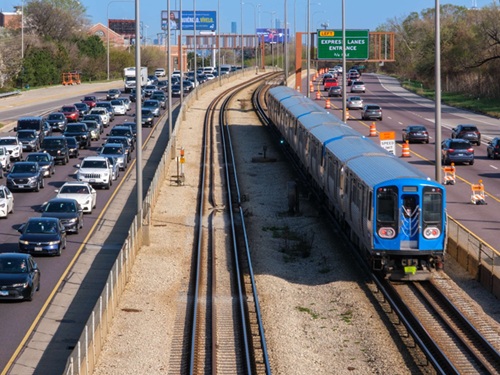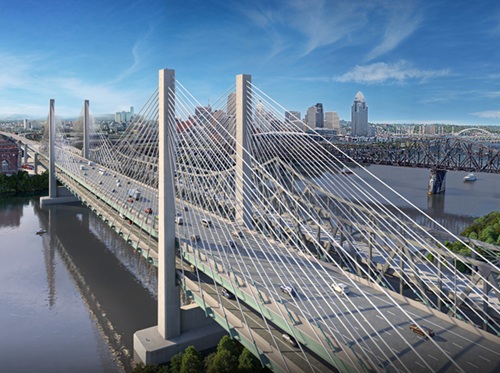The Federal Transit Administration recently issued $686 million to fund 15 grants in nine states to make it easier for people with disabilities and mobility needs to access some of the nation’s oldest and busiest rail transit systems through essential upgrades, such as elevators.
[Above photo by the MBTA]
That grant money represents the first round of funding from the FTA’s new All Stations Accessibility program, which is designed to improve the accessibility of transit rail stations so everyone, including those who use wheelchairs, push strollers, or cannot easily navigate stairs, can reliably access the rail systems in their communities.

“Inaccessibility” is a significant hurdle for riders using transit rail systems built before 1990, according to the FTA, with more than 900 transit stations within such “legacy systems” still not fully accessible today.
The “All Stations Accessibility” program provides support for transit agencies to repair, improve, modify, retrofit, or relocate station elements or facilities for passenger use. The agency noted that the $1.2 trillion Infrastructure Investment and Jobs Act provides $1.75 billion for this rail transit program over five years.
“Since the passage of the Americans with Disabilities Act, great strides have been made in improving accessibility, but there is still a lot of work to do,” explained FTA Administrator Nuria Fernandez in a statement.

“This includes modernizing rail systems in some of our most transit-oriented cities, and [this] program provides much-needed funding to address these overdue improvements,” she said.
“We want to ensure people with disabilities and others who need extra assistance are able to use transit systems with the same ease and reliability as any other user,” Fernandez added.
Some of the projects funded by this first round of grant funding include:
- The Connecticut Department of Transportation gets $29.6 million to retrofit three stations on its Metro-North Railroad Waterbury Branch commuter rail line – which provides service to New York City – to make them fully accessible to passengers with disabilities. Improvements to the century-old stations include building a high-level rail platform and installing handrails, providing more equitable service and increase access to jobs.
- The Massachusetts Bay Transportation Authority – a division of the Massachusetts Department of Transportation – receives more than $66 million to retrofit an 80-year-old light rail station with elevators, improved pathways and lighting features, and raised platforms for accessible boarding. Improvements to the Symphony station – located at the crossroads of some of Boston’s busiest neighborhoods – should make the station fully accessible for people with disabilities, seniors and others, many of whom live in nearby senior residential buildings and an assisted living center.
- The Maryland Transit Administration – a division of the Maryland Department of Transportation – gets nearly $7.2 million to develop plans and complete environmental work for the future renovation of the Martin Airport station on its Penn commuter rail line to make it safer and fully accessible. That station, located north of Baltimore, requires riders to cross multiple tracks to board the train.
 Nation
Nation


